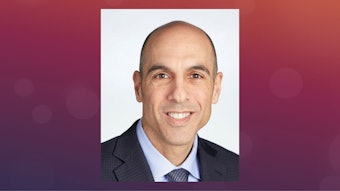High-rolling research
Hospitalists hit the jackpot with updates on important studies from 2024.

In Thursday’s Update in Hospital Medicine, Joanna Bonsall, MD, PhD, SFHM, chief of the Emory Medical Service at Grady Memorial Hospital in Atlanta, and Dustin Smith, MD, SFHM, associate professor in the department of medicine at Emory University, took attendees on a high-stakes tour of the casino floor featuring nine gambling games and nine studies that were a sure bet for hospitalists in 2024. Below are some of the highlights.
Know when to hold ‘em
Dr. Smith kicked off the tour with a poker analogy and a study from the New England Journal of Medicine, titled “Finerenone in Heart Failure With Mildly Reduced or Preserved Ejection Fraction.” It was an international, double-blind trial in which the researchers randomly assigned patients with heart failure and a left ventricular ejection fraction of 40% or greater to receive finerenone or a matching dose of placebo in addition to their usual therapy.
“We know mineralocorticoid receptor antagonists (MRAs) reduce heart failure, hospitalization, and death in patients with heart failure with reduced ejection fraction,” Dr. Smith said. “But how these agents perform with preserved ejection fraction is really less established.”
The researchers found that in patients with heart failure and mildly reduced or preserved ejection fraction, finerenone resulted in a significantly lower rate of a composite of total worsening heart failure events and death from cardiovascular causes than placebo.
“I think it’s best to try your hand and hold on finerenone,” Dr. Smith said. “And then fold on the other MRAs.”
Splitting a pair of aces
Dr. Bonsall moved on with some advice on splitting pairs in blackjack and a study from the European Heart Journal, titled “Effect of Four Hemoglobin Transfusion Threshold Strategies in Patients With Acute Myocardial Infarction and Anemia: A Target Trial Emulation Using MINT Trial Data.”
“Your patient comes in with a hemoglobin of 8.5g/dL, and there are some areas of uncertainty, as you all know,” Dr. Bonsall said. “Blood is gold, and we want to treat it like a precious resource, so what do we do here? Do we transfuse at nine, or do we transfuse at 10?”
The researchers used data from the Myocardial Ischemia and Transfusion (MINT) trial to better understand the gradient of effects from hemoglobin threshold transfusion triggers between 7g/dL and 10g/dL. They estimated a progressively greater risk of 30-day death from myocardial ischemia (MI) as hemoglobin transfusion thresholds decreased within that range of 7-10g/dL. This, they said, meant that targeting a higher hemoglobin concentration in patients with a recent acute MI may avoid serious risks associated with anemia.
“I think we can conclude from this paper that using a transfusion threshold of nine versus 10 or eight is a good balance of risk of anemia and balance of using a precious resource, which is blood,” Dr. Bonsall said.
Spin the wheel
In roulette, according to Dr. Smith, you should always bet on black … or red. “It’s 50-50, right? Just don’t bet on green, that won’t work out well for you,” he said, before walking attendees through a study from the American Journal of Gastroenterology, titled “Early Diagnostic Paracentesis Improves Outcomes of Hospitalized Patients With Cirrhosis and Ascites: A Systematic Review and Meta-Analysis.”
Researchers assessed the outcomes of early versus delayed diagnostic paracentesis among hospitalized patients with cirrhosis and ascites by pulling data from seven observational cohort studies. What they found suggested that early diagnostic paracentesis (within 12-24 hours of admission) is associated with better patient outcomes. And doing it within 12 hours may be associated with the greatest mortality benefit.
“If you remember one thing, it’s that diagnostic paracentesis should be performed within 24 hours in all patients hospitalized with cirrhosis and ascites,” Dr. Smith said.
To play or not to play
When it comes to keno, Dr. Bonsall had only one bit of advice: “Just don’t play keno. Keno is really Vegas’s answer to trying to keep you gambling the whole entire time that you were here.”
The question around the treatment of hyponatremia is not whether to treat it, but rather how fast it should be treated. Dr. Bonsall reported on an analysis in JAMA Internal Medicine titled “Correction Rates and Clinical Outcomes in Hospitalized Adults With Severe Hyponatremia: A Systematic Review and Meta-Analysis.”
This analysis looked at 16 studies to determine whether slow or rapid correction of severe hyponatremia would improve mortality rates. The researchers found that a slow correction of severe hyponatremia was associated with an increased risk of mortality. Although this is a valid conclusion, Dr. Bonsall shared some issues with the studies reviewed, including the fact that not all outcomes were reported.
“We also know that hyponatremia is just associated with poor outcomes in patients with things like heart failure and liver disease so these results may represent correlation rather than causation,” she said.
Still, she said, there are some strong points to take away from the research.
“We need to pay as much attention to correcting too slowly as we do to correcting too quickly,” she said.
Don’t make emotional decisions
When placing bets at a sportsbook, Dr. Smith urged attendees to remember not to make emotional decisions. This also applies to choosing your hospitalist.
A study published in the Annals of Internal Medicine, titled “Hospital Mortality and Readmission Rates by Physician and Patient Sex,” attempted to determine the role that gender played in the treatment of patients. Dr. Smith said he found this study particularly interesting because 70% of the providers in the study met the definition of hospitalist.
The authors concluded that patients may have lower mortality and readmission rates when treated by female physicians, particularly when those doctors are caring for female patients.
“When I think about this study, I start to think about what I can learn from my female colleagues in hospital medicine — what they are doing that I should be able to do to help my patients,” Dr. Smith said.
Visit SHM Meeting News Central for more coverage.











